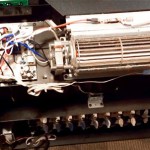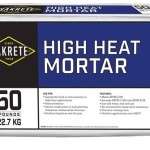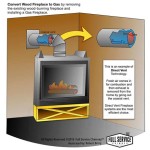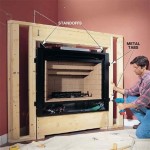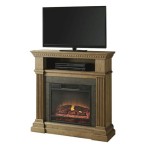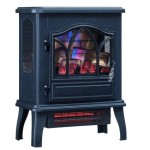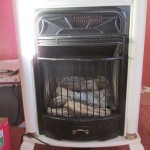Gel Fireplace Reviews: Examining Safety, Aesthetics, and Functionality
Gel fireplaces have emerged as a popular alternative to traditional wood-burning and gas fireplaces. These ventless appliances offer a combination of aesthetic appeal and relative ease of use, making them an attractive option for homeowners and renters alike. Understanding the advantages and disadvantages of gel fireplaces, along with a thorough examination of various models, is crucial before making a purchase. This article provides an objective overview of gel fireplaces, analyzing their safety, aesthetics, functionality, and overall value for potential users.
Gel fireplaces utilize a specially formulated gel fuel, typically composed of isopropyl alcohol and a thickening agent. This fuel burns cleanly, producing a real flame without the need for a chimney or venting system. The absence of smoke, soot, and ash contributes to their appeal, allowing them to be used in spaces where traditional fireplaces are impractical or prohibited. However, the reliance on a consumable fuel source and the potential hazards associated with open flames necessitate careful consideration.
Key Considerations Before Purchasing a Gel Fireplace
Purchasing a gel fireplace requires careful evaluation of several factors. These include the size of the space where the fireplace will be used, the intended use (decorative versus supplemental heating), the budget allocated for the fireplace and fuel, and the safety features incorporated into the design. Ignoring these considerations can lead to dissatisfaction with the purchase or, more seriously, pose a safety risk.
The size of the room is a critical factor. Gel fireplaces typically produce a limited amount of heat, making them unsuitable for heating large spaces. A small studio apartment or a cozy living room might benefit from the supplemental warmth, but larger areas will require alternative heating solutions. Similarly, the intended use dictates the required size and BTU output of the fireplace. If the primary purpose is aesthetic, a smaller, less powerful model may suffice. However, if supplemental heating is desired, a larger model with a higher BTU rating should be considered.
The ongoing cost of gel fuel is another significant consideration. While the initial purchase price of a gel fireplace may be relatively low, the recurring expense of fuel can quickly add up. Calculating the estimated fuel consumption based on usage habits is essential to determine the long-term cost-effectiveness of the fireplace. Prices vary based on brand, quantity purchased, and retailer, so comparing prices is advisable.
Safety features are paramount. Look for models with sturdy construction, tip-over protection, and clear instructions for use. Understanding the proper procedures for refilling the fuel canisters and extinguishing the flame is crucial to prevent accidents. It is also important to keep flammable materials away from the fireplace and to never leave it unattended while burning.
Examining the Aesthetic Appeal of Gel Fireplaces
The aesthetic appeal of gel fireplaces is a primary driver of their popularity. They offer a visually appealing flame without the complexity and mess associated with traditional fireplaces. Gel fireplaces are available in a wide range of styles, from modern and minimalist designs to more traditional and ornate models, allowing them to complement various interior decor schemes.
Tabletop gel fireplaces offer a portable and versatile option, suitable for use on coffee tables, dining tables, or mantels. These smaller units often feature decorative elements such as glass beads, ceramic logs, or river rocks, enhancing their visual appeal. Wall-mounted gel fireplaces provide a space-saving alternative, creating a focal point on a wall without taking up valuable floor space. These models often feature sleek, contemporary designs and can be easily installed in apartments or condominiums where traditional fireplaces are not feasible.
Freestanding gel fireplaces resemble traditional wood-burning stoves or fireplaces, offering a more substantial presence in a room. These models typically feature a larger fuel capacity and a higher BTU output, providing more significant supplemental heating. The choice of material, such as stainless steel, cast iron, or stone, can further enhance the aesthetic appeal of the fireplace and complement the overall decor of the space.
The flame itself is a key element of the aesthetic appeal. Gel fuel burns with a vibrant, flickering flame that closely resembles a real wood-burning fire. The absence of smoke and soot allows for a clearer view of the flame, enhancing the visual experience. Some gel fuels are even scented, adding an aromatic dimension to the ambiance. However, it is important to note that the flame produced by a gel fireplace is not identical to that of a wood-burning fire. It tends to be more uniform and less dynamic, lacking the crackling sounds and the characteristic aroma of burning wood.
Evaluating the Functionality and Safety of Gel Fireplaces
The functionality of a gel fireplace is largely determined by its BTU output and fuel capacity. The BTU (British Thermal Unit) rating indicates the amount of heat produced by the fireplace per hour. A higher BTU rating translates to more heat, but also faster fuel consumption. The fuel capacity determines how long the fireplace can burn before requiring a refill. Larger fuel canisters allow for longer burn times, but also increase the overall size and weight of the fireplace.
Gel fireplaces are primarily intended for supplemental heating and aesthetic purposes. They are not designed to be the primary source of heat for a room. While they can provide a comfortable level of warmth in a small space, they are not capable of heating larger areas efficiently. The heat produced by a gel fireplace is typically localized, meaning that it is most effective in the immediate vicinity of the appliance. Distributing the heat evenly throughout a larger room may require the use of fans or other supplemental heating devices.
Safety is a paramount concern when using any open flame appliance. Gel fireplaces, while ventless, still pose a potential fire hazard if not used properly. It is crucial to follow the manufacturer's instructions carefully and to adhere to all safety precautions. Never leave a gel fireplace unattended while burning. Keep flammable materials, such as curtains, furniture, and bedding, away from the fireplace. Ensure that the fireplace is placed on a stable, level surface to prevent tipping. Supervise children and pets closely when the fireplace is in use.
Refilling the fuel canisters should be done with extreme caution. Allow the fireplace to cool completely before refilling the canisters. Use only the recommended type of gel fuel and avoid overfilling the canisters. Wipe up any spills immediately with a damp cloth. Store gel fuel in a cool, dry place away from heat and flames. Never attempt to modify the fireplace or use unauthorized fuels. Doing so could create a dangerous situation.
Extinguishing the flame should also be done according to the manufacturer's instructions. Some gel fireplaces come with a snuffer tool specifically designed for extinguishing the flame. Others require simply covering the fuel canister with a non-flammable lid. Never use water to extinguish the flame, as this could cause the fuel to splatter and spread the fire. Ensure that the flame is completely extinguished before leaving the room or going to bed.
Regular maintenance is essential to ensure the safe and efficient operation of a gel fireplace. Clean the fireplace regularly with a soft cloth to remove dust and debris. Inspect the fuel canisters for any signs of damage or leakage. Replace any damaged or worn parts immediately. Have the fireplace professionally inspected periodically to ensure that it is functioning properly.
When considering the safety of a gel fireplace, it's also important to be aware of potential indoor air quality issues. While gel fuel burns cleanly compared to wood, it still produces carbon dioxide and other combustion byproducts. Proper ventilation is crucial to prevent the buildup of these gases. Ensure that the room is adequately ventilated by opening a window or door, especially when the fireplace is in use for extended periods.
Furthermore, individuals with respiratory sensitivities or allergies may experience adverse reactions to the fumes produced by gel fuel. Monitoring for any signs of respiratory irritation, such as coughing, wheezing, or shortness of breath, is important. If such symptoms occur, discontinue use of the fireplace and consult with a healthcare professional.
The longevity of a gel fireplace depends on several factors, including the quality of construction, the frequency of use, and the level of maintenance. Models made from durable materials, such as stainless steel or cast iron, tend to last longer than those made from cheaper materials. Regular cleaning and maintenance can also help prolong the lifespan of the fireplace. With proper care, a gel fireplace can provide years of enjoyment and supplemental warmth.

Terraflame Lloyd Modern Gel Fuel Fireplace Review

Lloyd Modern Gel Fuel Fireplace Luxury Fire

Terraflame

Mid Mod Gel Fuel Fireplace

Terraflame

Lloyd Modern Gel Fuel Fireplace Luxury Fire

Lloyd Modern Gel Fuel Fireplace Luxury Fire

Terraflame 25 5 In X Gel Fuel Fireplace The Ethanol Fireplaces Department At Com

Terraflame

Terraflame 25 5 In X Gel Fuel Fireplace The Ethanol Fireplaces Department At Com

